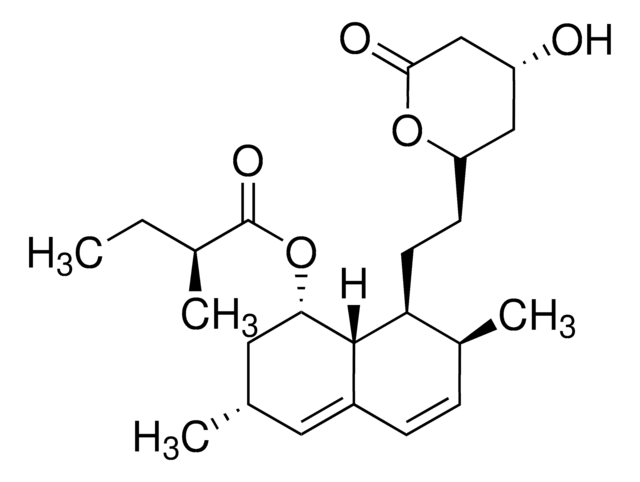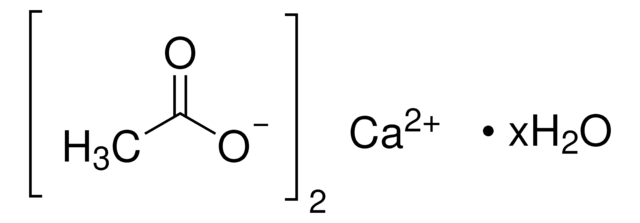S8625
Acetato de sodio trihydrate
ReagentPlus®, ≥99.0%
Sinónimos:
Ácido acético sodium salt trihydrate
About This Item
Productos recomendados
product line
ReagentPlus®
assay
≥99.0%
form
powder
autoignition temp.
1112 °F
pH
8.5-10 (25 °C, 408 g/L)
pKa (25 °C)
4.76 (acetic acid)
SMILES string
O.O.O.[Na+].CC([O-])=O
InChI
1S/C2H4O2.Na.3H2O/c1-2(3)4;;;;/h1H3,(H,3,4);;3*1H2/q;+1;;;/p-1
InChI key
AYRVGWHSXIMRAB-UHFFFAOYSA-M
¿Está buscando productos similares? Visita Guía de comparación de productos
Categorías relacionadas
Application
- Direct Affinity Ligand Immobilization onto Bare Iron Oxide Nanoparticles Enables Efficient Magnetic Separation of Antibodies: Highlights the role of sodium acetate trihydrate in bioengineering, particularly in the enhancement of magnetic nanoparticle performance for bioseparation applications (Zimmermann I, Berensmeier S, 2024).
- Physicochemical and antioxidant properties of pectin fractions extracted from lemon (Citrus Eureka) peels: Details the use of sodium acetate trihydrate in the extraction and analysis of bioactive compounds, supporting its critical role in food science and nutraceutical applications (Su Z, Li G, 2024).
Other Notes
Legal Information
Storage Class
11 - Combustible Solids
wgk_germany
WGK 1
flash_point_f
Not applicable
flash_point_c
Not applicable
Certificados de análisis (COA)
Busque Certificados de análisis (COA) introduciendo el número de lote del producto. Los números de lote se encuentran en la etiqueta del producto después de las palabras «Lot» o «Batch»
¿Ya tiene este producto?
Encuentre la documentación para los productos que ha comprado recientemente en la Biblioteca de documentos.
Los clientes también vieron
Protocolos
This procedure may be used for the determination of Amyloglucosidase activity using starch as the substrate.
Proteases break peptide bonds. In the lab, it is often necessary to measure and/or compare the activity of proteases. Sigma's non-specific protease activity assay may be used as a standardized procedure to determine the activity of proteases, which is what we do during our quality control procedures.
Measure and compare the activity of proteases with this non-specific protease activity assay using casein. Use this assay as a standardized procedure to determine the activity of proteases for quality control.
Nuestro equipo de científicos tiene experiencia en todas las áreas de investigación: Ciencias de la vida, Ciencia de los materiales, Síntesis química, Cromatografía, Analítica y muchas otras.
Póngase en contacto con el Servicio técnico







